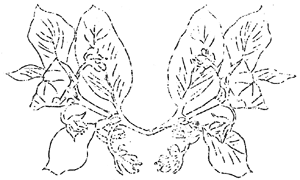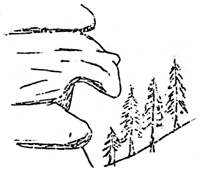|
DEPARTMENT OF INTERIOR
NATIONAL PARK SERVICE
CRATER LAKE NATIONAL PARK
OREGON
Mr. E.C. Solinsky
Superintendent |
Mr. Earl U. Homuth
Acting Park Naturalist |
| NATURE NOTES FROM CRATER LAKE |
|
August 1, 1929. |
Vol. II, No. 2 |
This is one of a series of bulletins issued monthly during the
summer season, by the staff of the Educational Division to give
information on subjects of interest concerning the Natural History of
Crater Lake. It is supplemental to the lectures and field trips
conducted by the staff.
* * * * * * * * * * * * * * * * * * * *
For copies which are free, address the Superintendent or Acting Park
Naturalist.
Castle Crest Garden
By Earl U. Homuth
That the variety and profusion of wild flowers in Crater Lake
National Park compares favorably with those of other Parks, is not
generally evident to the casual visitor. The limited flora found on the
immediate Rim where most visitors camp may have given this impression.
But the moist meadows and swamps, where the streams are block by
moraines, and the slopes where countless springs flow from the rocks
provide conditions in which typical mountain wild flower gardens are
found.
A natural wild flower garden of this type lies at the base of Castle
Crest, less than two miles from the Rim and a few hundred yards from
Headquarters, hidden from the road by a series of moraines. A path has
been constructed to this garden. It passes through a variety of
habitats, including talus slopes, dry pumice slopes, moist cliffs,
forest and swamps. The elevation of 6600 feet places it on the border
between the Canadian and Hudsonian Zones, so that the forest trees seen
on the Rim above, and those of the lower slopes of Mount Mazama are
represented.
Among the wild flowers over two hundred species have been listed,
including four species of mimulus, or Monkey flowers, of which the Pink
Monkey flower (Mimulus lewisii) grows in great masses of color.
The Monk's hood (Aconitum columbianum), Senecio (Senecio
triangularis), and Fleabane (Erigeron salsuginosus) occur in
particular abundance in the moist areas, while the moraines are covered
with great patches of Scarlet Gilia (Gilia aggregata) and a
veritable hedge of lupines, sedges and numerous others form a boundary
between the moist and dry habitats. Countless mosses occur on knolls
built up on the meadow. The forest floor is covered with creeping
currants and raspberries. Near the entrance to the garden is the
largest area of Western Anemone (Pulsatilla occidentalis) to be
found in the vicinity. Two species of orchids (Limnorchis
stricta and L. dilitata) are also to be found.
Species not occurring now will be transplanted and it is hoped that
Castle Crest Garden which has been named for the towering cliff which
rises two thousand feet above, may in time become recognized as a
distinct feature of Crater Lake National Park.

Fantastic Carvings By Erosive Agents
By Dale Leslie, Ranger Naturalist
The various agents of erosion have carved many fantastic images on
the massive igneous outcrops found on the rim of Crater Lake.

As one views the profile of Garfield Cliffs from the west, he sees a
huge boulder jutting from the wall about half way to the summit of the
escarpment. This mass of rock from this position assumes the shape of a
bear partly emerged from its den. So vividly is this portrayed, one
imagines the head and shoulders are undergoing physical strain
endeavoring to drag the rest of the body from the den.
How long this masterpiece of nature may be seen is not known as the
walls of the cliff are rapidly wearing away as evidence in the small
daily rock slides which occur in that area.
However, if the image of the bear is gradually being effaced, it may
be possible for another still more fantastic shape to be formed at some
point further down from the debris which falls from above.
| 
